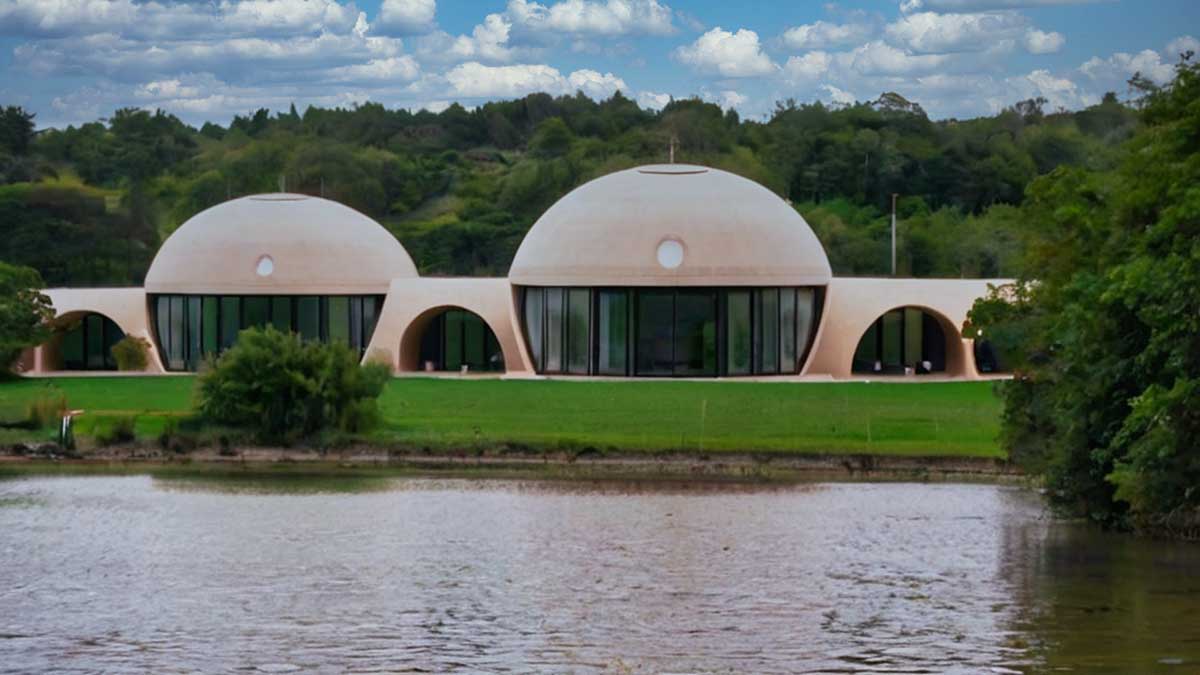The Binishells system is a method of building vaulted structures using inflatable modules that are covered with sprayed concrete. The inflatable modules serve as moulds, so that after the concrete has set, the module is deflated and removed, and the structure for which it served as a mould remains solid and firm. Italian architect Dante Bini conceived this innovative construction system in the 1960s. His surname, combined with the word ‘shell’, is the origin of its name.

The Binishells construction process is divided into several technical phases:
–Design and planning: the design of the desired shape is carried out, with consideration of the size and its location.
–Construction of the formwork: a temporary formwork is installed in the ground, following the predetermined dimensions and shapes for the structure.
–Inflation of the membrane: a PVC membrane is placed on the formwork and inflated with compressed air until the desired shape of the structure is achieved.

–Application of concrete: a layer of reinforced concrete is applied on top of the inflated membrane, which is reinforced according to the structural needs.
–Curing of the concrete: once the concrete has been applied, it is left to harden for a specified period.
–Removal of the membrane: after reaching the required strength, the membrane is deflated and carefully removed, leaving the reinforced concrete structure standing.
–Finishing and final touches: finishing touches are made and additional architectural elements such as doors, windows and other fixtures are incorporated.

Binishells structures stand out for their robustness, durability and adaptability to different climatic and geographical conditions. In addition, the dome shape offers natural load distribution and efficient utilisation of the interior space. This system has been used in a wide variety of projects, ranging from housing to commercial and public facilities.
By Ángel Ibáñez Pérez, Senior MEP Engineer in the Architectural Department of Amusement Logic






